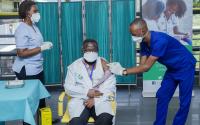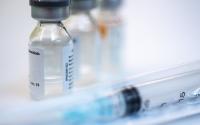[ad_1]
Table of Contents
Pre-, asymptomatic COVID cases lead to half of transmissions, study finds
Presymptomatic and asymptomatic COVID-19 cases contributed at least 50% of transmissions during New York City’s first COVID surge, according to a study published yesterday in Proceedings of the National Academy of Sciences.
The researchers applied a stochastic epidemiologic model that integrated daily changes in testing capacity to New York City’s case and serologic data from Mar 1 to Jun 1, 2020, and Mar 8 to Apr 19, 2020, respectively. While asymptomatic transmission rates are still unknown, the researchers report that asymptomatic and symptomatic cases had reproduction rates of at least 3 in every reasonable simulation—above the estimated 2 to 3 rate reported in many cities where interventions were already in place. (Reproduction rates are the number of secondary cases caused by a primary case.)
If asymptomatic infections transmit at similar rates compared with symptomatic infections, they write, the reproductive number for all COVID-19 cases is 3.2 to 4.4. However, if asymptomatic infections transmit at a lesser rate, then symptomatic cases may have a reproductive value of 3.9 to 8.1, which could support superspreader observations.
Testing policies and data should be more transparent to strengthen epidemiologic models, the researchers write. “Testing only symptomatic cases can result in at least a fourfold increase in the IFR [infection fatality ratio] that is calculated,” the researchers write. “Limitations in testing capacity may also impact the estimated IFR.”
Regarding New York City, the results indicated that COVID-19 transmissions began in February, which could be attributed to either the lag time between infection onset and hospitalization or because of a dosage-dependent effect in which more SARS-CoV-2 contact could lead to higher disease severity. The researchers also found that when the city implemented its lockdown, COVID transmission rate dropped 76.0% to 87.6%.
Even though the study could only estimate reproduction rates, the researchers say, “The strong consistent contribution to community transmission from cases without symptoms observed across scenarios supported by the data should be considered when formulating public health intervention strategies.”
Feb 10 Proc Natl Acad Sci study
Factoring in chills, other COVID-19 symptoms may optimize testing
While fever, cough, loss of smell, and loss of taste are the four classic COVID-19 symptoms, data from the REal-time Assessment of Community Transmission (REACT) study indicate that approximately 60% of infected people don’t display these symptoms in the week leading up to their test.
The study, published yesterday as a non–peer-reviewed preprint by Imperial College London, used sample swab and questionnaire data from 1,147,349 UK residents ages 5 and up. The researchers found that, from June through December 2020, the presence of one of the classic symptoms had a 5.5% positive predictive rate, and experiencing one of the other 22 symptoms had a 0.8% positive predictive rate. In January 2021, when B117 accounted for about 86% of cases, classic symptoms had a 20.7% positive predictive rate and other symptoms had a 2.5% predictive rate.
Overall, chills were a common symptom across all ages, but Least Absolute Shrinkage and Selection Operator stability selection also indicated that certain age-groups were more likely to display headaches (children 5 to 17 years), appetite loss (18 and older), and muscle aches (18 to 54). When comparing pre- and post-B117 dominance, the researchers noted that the variant’s presence may have increased the prevalence of coughing and decreased the prevalence for loss of smell.
The researchers say if everyone with at least one classic symptom was tested, only 55% of all symptomatic cases would have been identified in January 2021. If test strategies were adapted to accommodate the stability selection results, though, 76% of all symptomatic cases would have been identified in January.
“The ~40% increase in case detection (above that for at-least-one-of-four symptoms) would involve a 2.7-fold increase in the number of tests allocated to the symptomatic population in England,” the researchers write.
“These new findings suggest many people with COVID-19 won’t be getting tested—and therefore won’t be self-isolating—because their symptoms don’t match those used in current public health guidance to help identify infected people,” Paul Elliott, MBBS, PhD, said in an Imperial College London article.
Feb 10 Imperial College London study
Feb 10 Imperial College London article
[ad_2]
Source link












